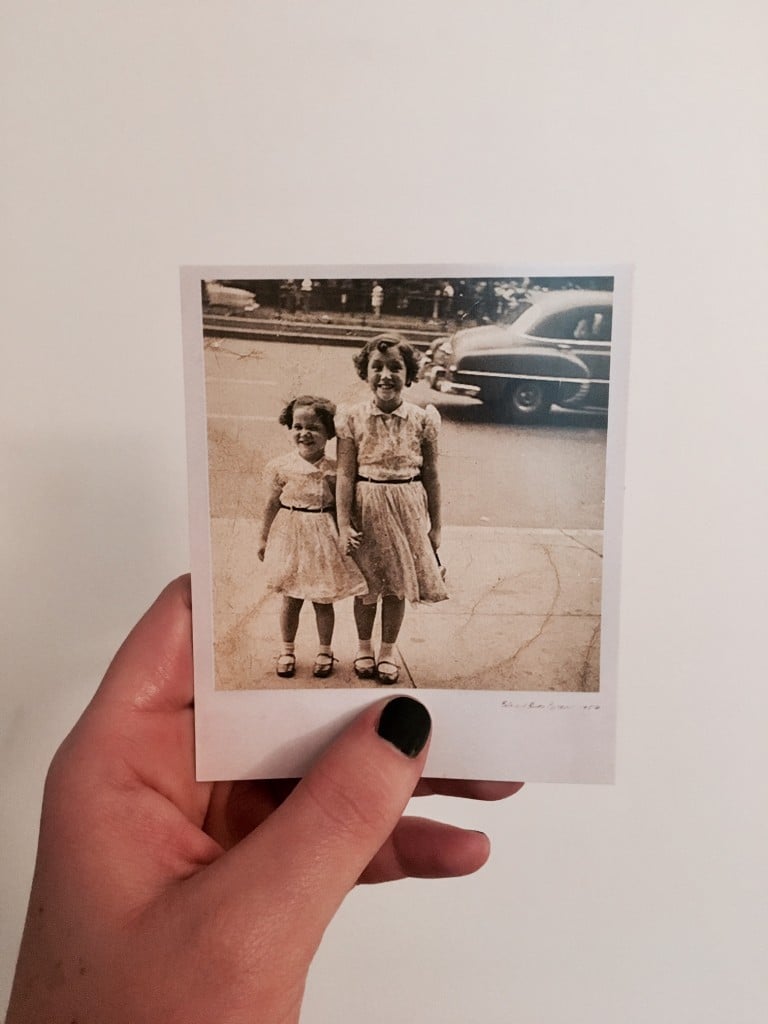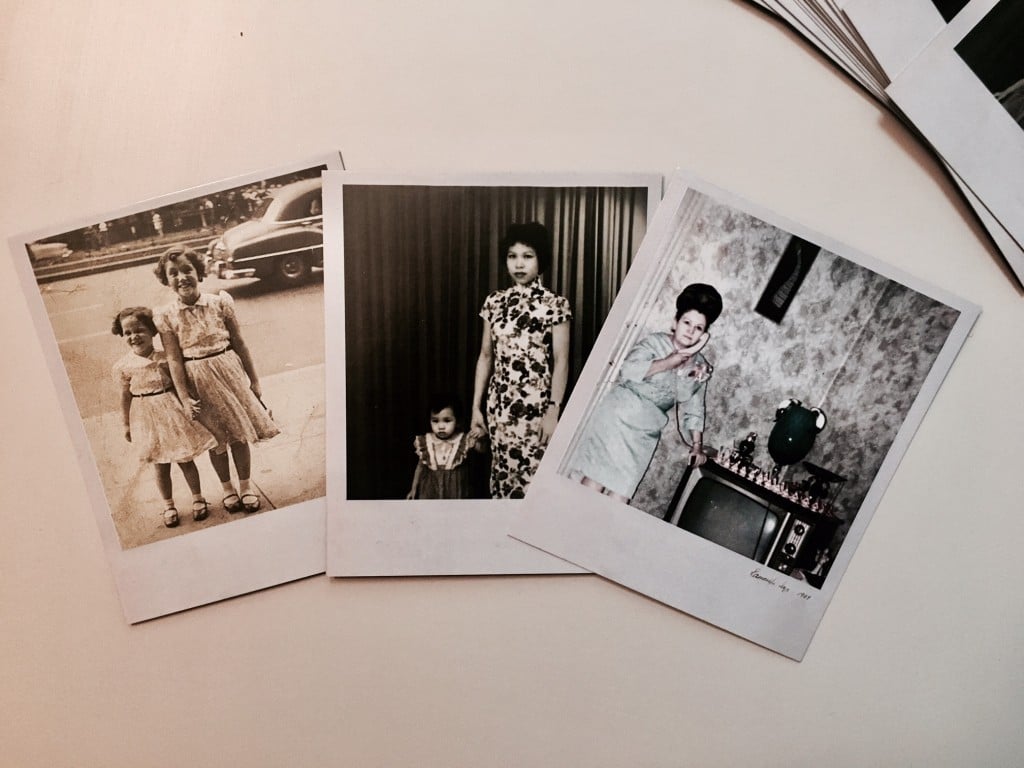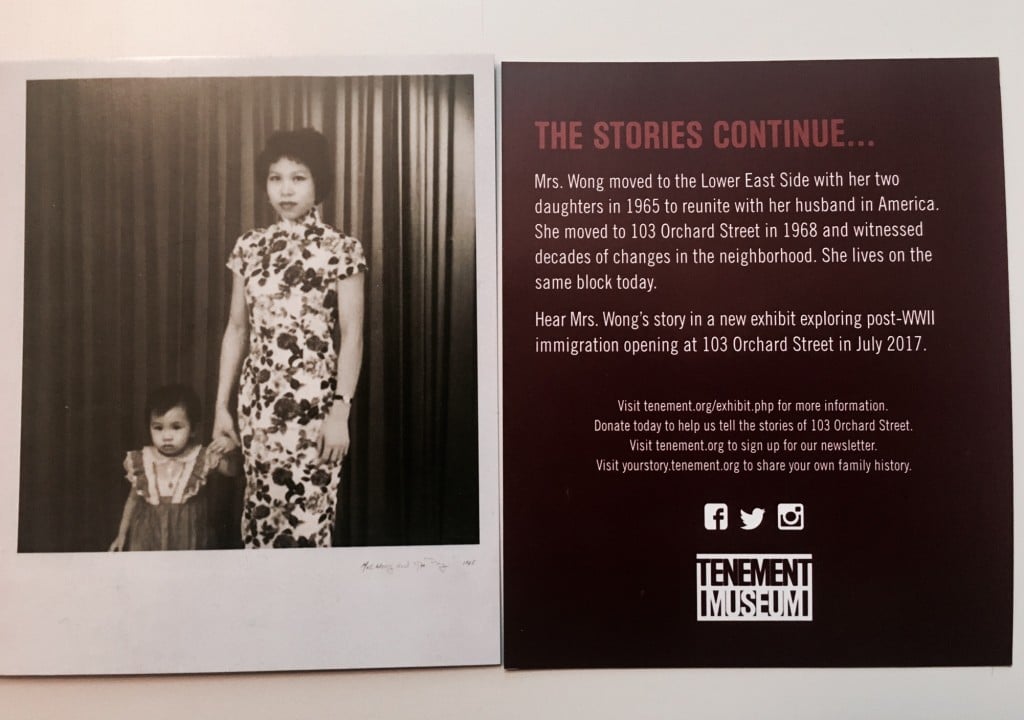Blog Archive
Take a Picture, It’ll Last Longer
The little girls are adorable, standing on the sidewalk, smiling big, the chrome trim of last year’s model passing by.
The mother is looking past the camera, leaning on the vintage television set, talking on the phone, hair done, dressed up for something, but we don’t know what.
A mother and her daughter are waiting patiently for their portraits to be taken wearing frills and floral, standing in front of a staid curtain.
All three of these images are captured and framed by a Polaroid’s white edges, hearkening back to a time before Kodak was tinged with the nostalgia of analog technology, highlighting the impermanence of memory, of moments, of instant photography, of marketing handouts.
These are the photographs collected by the Tenement Museum from the Epsteins, the Saez family, and the Wongs, the people who are at the heart of our new exhibit at 103 Orchard that will open this summer. These photographs are also part of the promotional campaign we are distributing to in the Visitor’s Center.
The reactions to the cards have been overwhelmingly positive. Visitors are charmed by the families photographed and are drawn in by the clever design with its built-in appeal to memory and the very feeling of pointlessly shaking the picture until the image appeared.
While many visitors resist being asked to carry yet another piece of paper with them, others express appreciation and excitement for what we are doing. They want to extend the story. They want a reason to come back. They want something new to learn, something new that will connect them to the stories of the past as much as to the issues of the present.
 Beyond this general reaction, the most frequent response we get is visitors exclaiming that the little Epstein girls look like themselves and their sisters or their mothers at an early age. The background of the photograph with that vintage car helps, and the familiarity of the corner of Orchard and Delancey Street does too. Ultimately, I think the response to this image is really about the relationship between history, memory, and youth, the idea that we can relate to the past through our own formative experiences.
Beyond this general reaction, the most frequent response we get is visitors exclaiming that the little Epstein girls look like themselves and their sisters or their mothers at an early age. The background of the photograph with that vintage car helps, and the familiarity of the corner of Orchard and Delancey Street does too. Ultimately, I think the response to this image is really about the relationship between history, memory, and youth, the idea that we can relate to the past through our own formative experiences.
Indeed, one of the things that is most exciting about the new exhibit is its ability to use the oral histories of young people who grew up on the Lower East Side. These stories and the young characters that populate them provide a connection for some of our smaller visitors and, for some of our older guests, encourages a critical kind of nostalgia grounded not in an idealized past but in a real one. Like the exhibit will, these cards activate memories and use memories, but juxtapose them with the historical record.
Similarly, visitors see their own mothers in Ramonita Saez or see their own childhoods in the old Cathode Ray Tube console. At the visitor center, this is the image that, after staring at it for days and weeks, many staff have fallen in love with. We talk about Ramonita as archaeologists and storytellers wondering who took the picture and why. Is the object of the photographer Ramonita or the television? Why is Ramonita so dressed up? Where is she going? Who is she talking to on the phone? Even more so than the Epstein girls, this image captivates us because it does ask us to tell a story, and it asks us to be historians.
All three of these images also represent relationships, relationships between sisters and daughters and mothers, between photographers and the photographed, between the subjects whose pictures are taken and the viewer looking at them as family history or as an archive of the past. They predict the intimate connections visitors will have when they visit the recreated apartments at 103 Orchard. They remind us all of the work that the Tenement Museum does so powerfully.
Indeed, while of course these handouts are designed to get visitors excited about the new exhibit, to inspire them to come back next summer, they also preview what it is we’re trying to do. We can be captivated by the familiar, but the exhibit will also introduce all of us—educators, staff, and visitors alike—to stories that are different, stories that have often been left out of the history books.
After all, this is not the story of post-war suburbanization and white flight. It is the story of new waves of immigration. It is the story that union organizing didn’t end when the working classes moved on up and became middle managers in offices uptown. It persisted through Puerto Rican seamstresses and Chinese garment workers.
The new exhibit will show that women like Mrs. Wong who is posed here waiting for her portrait to be taken, holding hands with her daughter, also fought for a living wage the same way the Rogarshevskys did. The new exhibit will show that people like Ramonita and her children watched television the same way the Baldizzis listened to the radio. And it will show that kids like the Epsteins played on sidewalks and in backyards like so many generations before them, watching horses and trolleys and trains and eventually cars pass through the streets.
Everything we do as an organization from curating and educating to fundraising and marketing drives this message and tells America’s story through the present as much as through the past. The visitor center is where so much of this experience begins. We’re looking forward to the conversations these Polaroids start, and we’re looking forward to seeing what comes next.
- Mabel Rosenheck, Visitor’s Services at the Lower East Side Tenement Museum

